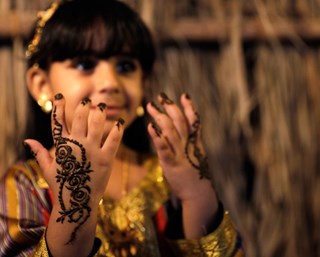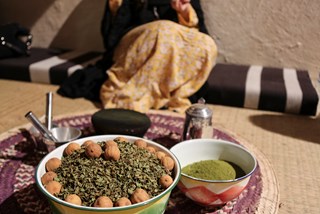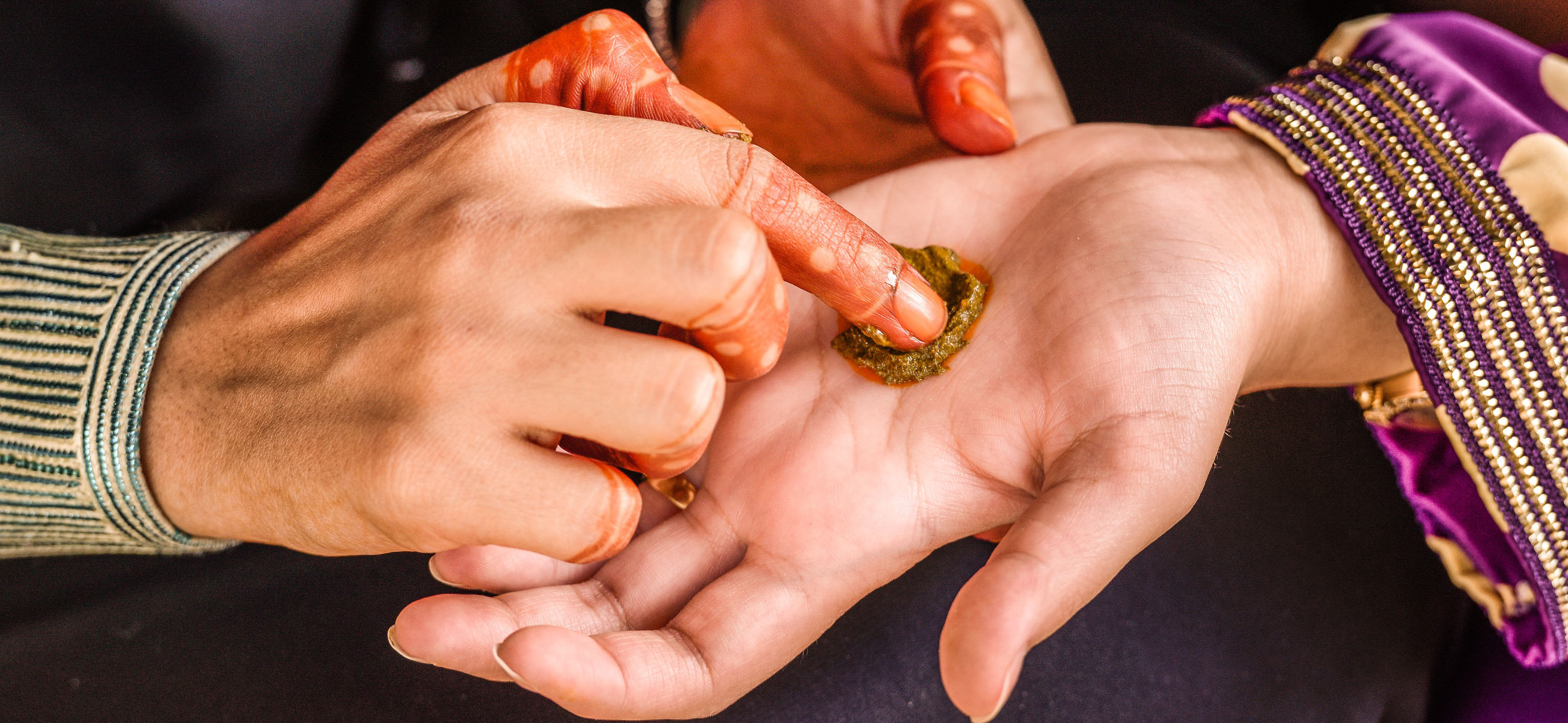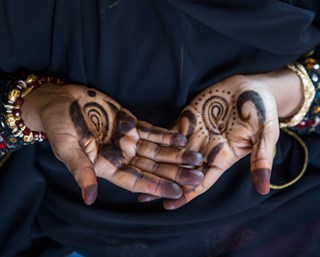Henna
Henna is a tree with a sweet smell that used to fill the gardens of many old houses; a plant that has been known since ancient times having been mentioned in the Torah, one of the oldest books, known as "amti fir". It is also mentioned by the Greeks by the name "fifrus" as found in their writings, used also in Greek medicine as a cure for different diseases.
Perhaps one of the oldest historical references to henna is linked to the ancient Egyptians. Henna has been found in the tombs of the late Pharaonic era and the Ptolemaic period, which indicates that the ancient Egyptians knew this plant and used it in mummification and distillation. There are clear signs that the mummies of Egypt often had finger and toenails stained with henna, and some mummies have also been found with their hair dyed red.

The henna plant has been used in the Arabian Peninsula since before Islam, where it was a leading commercial good offered by ancient Arab markets, such as the Akazh market, one of the most important markets, combining trade with something of a social forum, where traders from Yemen, the Gulf and Oman would display their goods. Traders from the Levant would display henna that they would bring from Ashkelon. This is proof of the great importance of henna in Arab society during the period before Islam.
Here we refer to Gabés, a city that knew and proliferated the use of henna through land caravans among traders and conquerors. The first of such people were the Arab conquerors who came to spread the Islamic religion in the region who brought with them eastern goods, plants, customs, culture and traditions and spread them among the new Islamic community that was established in Africa. They also transported goods, plants and a new culture to Arab countries and other areas that fell under the banner of Islam.

Henna was used during the subsequent Islamic era, both in the Umayyad and Abbasid periods, inferred through its representation in stories such as that of "Qatar Al-Nadi", the daughter of the Sutlan and a king of Egypt, Khamarawia bin Ahmad bin Towloun who was famous for her mind, beauty and manners, who was married to the Abbasid Caliph Mu'tadid in 281 AH. For her wedding the henna from all the traders' stores was emptied, distributed and sold for forty nights to all unmarried girls in the city of Al-Qata'i, spreading the famous song that says:
Henna Oh Henna of Qatar Al-Nadi, the window of my darling, the bringer of love.

In the modern era the importance of henna has been evident in Egypt. When Napoleon Bonaparte invaded Egypt, two of his doctors discovered that henna has a strong dyeing effect. They therefore prepared it as a material to dye wool and certain fabrics, still used in this manner for dyeing until today.
In the Gulf region henna tattoos are some of the most important folk arts that have been handed down, used as a natural decorative and cosmetic material among women from Gulf society for happy occasions such as weddings, holidays and others. As such, we find that the cultivation of the henna plant has greatly spread to the Gulf region, especially that a large amount of literature refers to "the Arabian Peninsula as the cradle of the henna plant", the land of the Arabs.

Often however, the henna plant was brought to the region by traders from India, Yemen, Oman and Sudan and sold to the people in the form of a ground powder. In the Emirates, henna is one of the most important artistic phenomenon of ancient Emirati heritage, representing an extension of its great history in this respect. Not only this but henna is also an important part of the customs and traditions of the community in the Emirate of Abu Dhabi, especially at weddings, holidays and happy occasions. Accounts confirm that "the henna tree was not originally present in the UAE, but brought from abroad". Another account states that "henna was present since ancient times and grown in Al-Ain and Al-Bureimi". There are also those who state that "traders brought henna from India, with the people of the oases then growing the henna tree where they resided and the Bedouin came to it from them".
Through this we can infer that henna was used by the residents of Abu Dhabi since ancient times, both the people of the oases and the Bedouin population alike. The henna plant originally was brought from Oman, India, Yemen and Al-Ahsa' in powder form before being grown in the oases in Abu Dhabi. The cultivation of the henna plant spread to different regions across the Emirate, now grown in most residences and houses in its towns and cities.